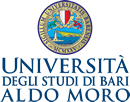Nidularia pulvinata (Planchon, 1864) (Hemiptera Kermesidae) gall-inducing attitude
DOI:
https://doi.org/10.15162/0425-1016/446Abstract
Recurrent Nidularia pulvinata outbreaks off Quercus ilex L. (Fagaceae) led us to scrutinize large amount of infested and damaged trunks, branches and twigs. A long series of detailed observations suggested studying the attitude of the Kermesidae to induce phloem/xylem disorganization by saliva injection, possibly. Evidence show that woody plants tissues near or under the scale insects swell considerably giving the organs a prominent and rising appearance. Infested bark and other plant surfaces are prone to produce crevices and other possible shelters for future crawlers that will find a nice living site nearby. In vivo transverse section, accurate observations corroborated with polarized light microscopy and Scanning Electron Microscopy suggests that the scale stylets strongly disturb the explored plant tissues. Plant tissues reply to the injury with considerable overgrowing and necrosis. By observations and evidenced we discuss the opportunity to consider Nidularia pulvinata a gall-making species, also comparing its attitude with that of other Kermesidae and Asterolecaniidae.
Nidularia pulvinata infestation starts from crawlers that set into natural bark crevices. Scales feeding elicits the plant reaction that results in progressive widening of infested crevices. That, in consequence, offers more room for the subsequent broods of the Kermesidae.
To evaluate the action of Nidularia feeding on host plant wood, we fell down two small Quercus ilex infested to death. We chose and mark several points before to cut the infested trunks and branches transversally.
The action of Nidularia pulvinata feeding on host plant wood is clear in the left and central figure in comparison to right picture of a not infested trunk. Each log was pictured from the transversal section and the corresponding side. Red dashed lines connect corresponding points of the wood. The red arrow points to wood overgrowths for Nidularia infestation, while a blue arrow target a lateral branch bud. Red lines encircle wood overgrowths due to hyperplasia/hypertrophy stimulated by the Kermesidae.
On twigs the Nidularia pulvinata feeding results in wood swelling, depression/overgrowth and necrosis.







